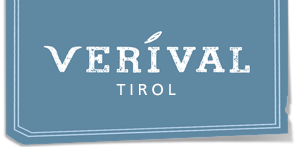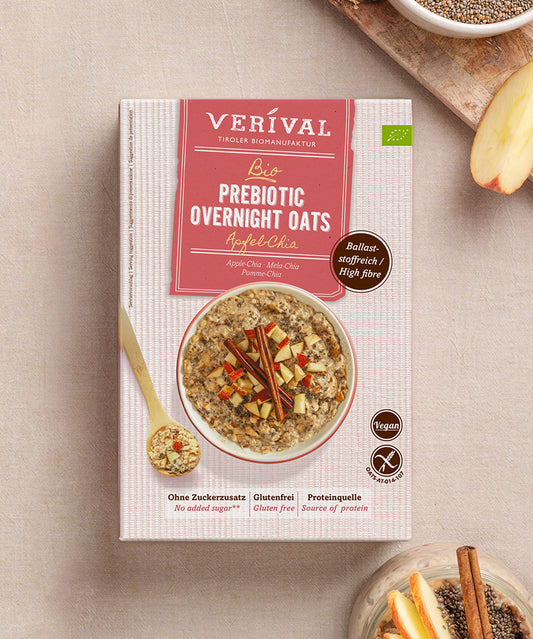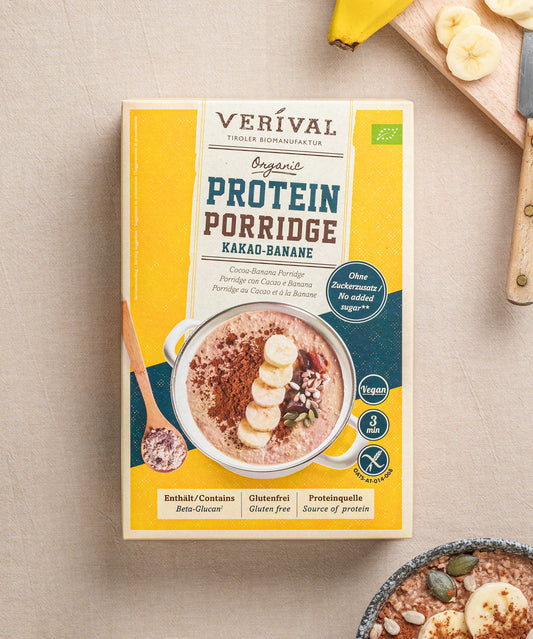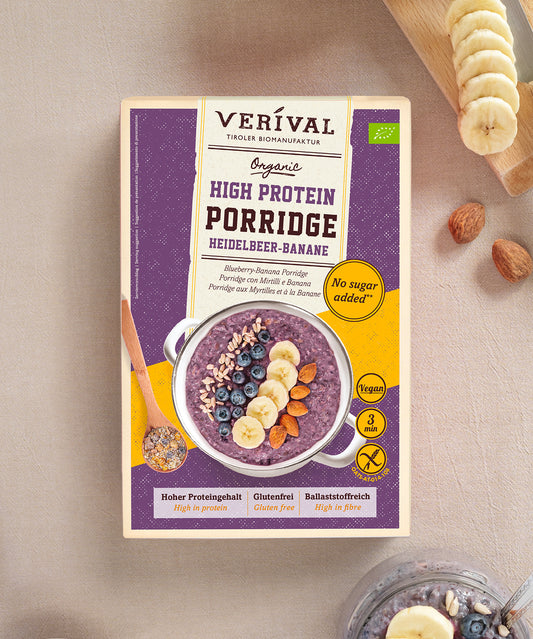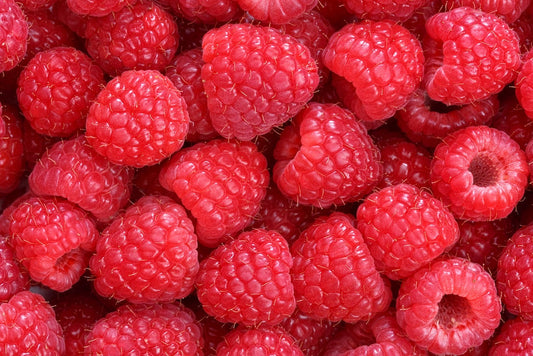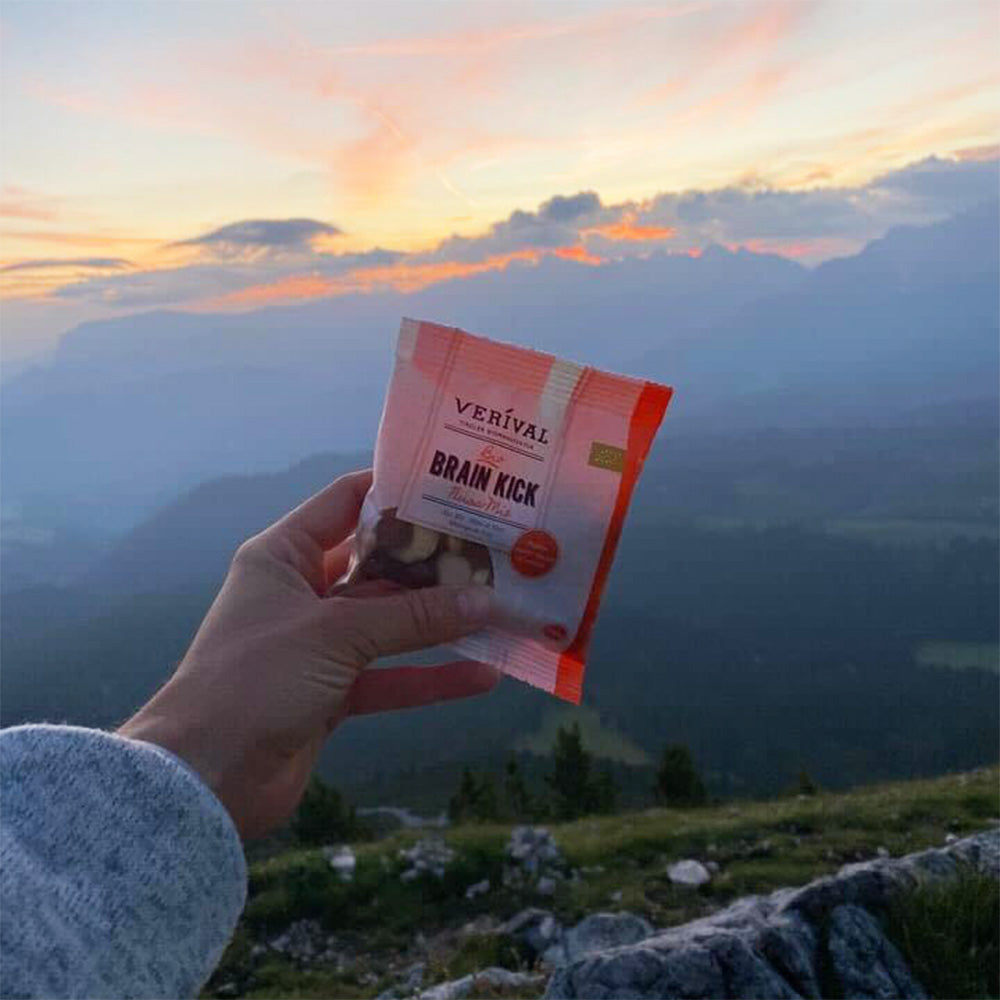You'll need to take a close look at the product range on offer if you want to live a sugar-free life.
Because “sugar-free” does not mean completely free of sugar, “no added sugar” does not necessarily mean that a product contains no sugar, and “low in sugar” products are to be seen in relation to others alone. These terms are defined in the Health Claims Regulation.
For a healthy diet, the WHO recommends a maximum sugar intake of five to ten teaspoons of free sugars per day. This corresponds to no more than twelve sugar cubes.
The German Society for Health (DGE) warns that consuming too much sugar can lead to widespread diseases such as obesity, type 2 diabetes mellitus or tooth decay.
A sugar-free breakfast can help you start your day full of energy and fit. That's because, while a high sugar consumption gives you energy for a short time, it makes you sluggish in the long run.
In the following article, we will explain the terms “sugar-free”, “no added sugar” and “low in sugar” and what they mean on the products.
Read all about sugar-free breakfast now
When can a food be labeled as “sugar-free”, “low-sugar” or “no added sugar”?
The so-called Health Claims Regulation of the EU specifies exactly which foods can be labeled as “sugar-free”, “low-sugar” or “no added sugar”.
If you want to switch to a completely sugar-free diet, you should read the small print on the labels of processed foods very carefully. This is because none of these labels actually guarantee that the product contains no sugar.
What does “sugar-free” actually mean?
Even sugar-free foods can contain a small amount of sugar! A food may be defined as “sugar-free” if it contains a maximum of 0.5 grams of sugar per 100 grams or 100 milliliters for beverages.
But what happens in the body when you stop eating sugar?
The body needs sugar, but strictly speaking only carbohydrates, which are converted into sugar. We therefore do not need any additional sugar.
How does the body react when you stop eating sugar?
If you avoid refined sugars such as household sugar or industrial sugar, your body will initially suffer from sugar withdrawal.
Cravings, fatigue, concentration problems and low moods can be the initial side effects. This phase lasts for different lengths of time for each person.
But once you have survived this period, you will be doubly rewarded! With weight loss, better sleep, fitness, more beautiful skin, positive effects on the heart and liver, and so on.
“Zero” IS zero, but...
Products labeled “zero sugar” really are sugar-free. However, sweet-tasting ingredients trick your body into thinking it's getting sugar, which it's not. It reacts to this with hunger attacks.
Sugar-free foods – What foods are available without sugar?
A completely sugar-free diet is hardly possible and is not always conducive to a healthy life. Many foods that contain sugar also contain valuable nutrients.
The purer the natural product you choose, the fewer unnecessary sugar traps there are to burden your body with.
“Low in sugar” – What does that mean?
“Low in sugar” refers to products that contain a maximum of 5 grams of sugar per 100 grams or 2.5 grams of sugar per 100 milliliters of a beverage. Watermelon, strawberries, and oranges are therefore already considered low-sugar foods.
Light
Light products contain less fat, sugar, nicotine, and have a lower calorie count. However, the term ‘light’ is not legally defined.
Even with light products, it is possible that your body will react with cravings, as with zero products.
Reduced sugar
“Reduced sugar“ means that a food contains at least 30 percent less sugar than comparable products. It is therefore a relative matter.
What does ‘no added sugar’ mean?
“No added sugar” clearly means products with no added sugar. This category includes all unprocessed foods such as potatoes, bananas, apples.
Free sugars are therefore not included, neither monosaccharides nor disaccharides nor other sweeteners such as honey, syrups or industrial sugars.
If sugar is naturally present in foods, these should be labeled “contains sugars naturally present”.
How can I recognize sugars in foods?
To find out whether the products you choose contain added sugars, you need to read the label. You can recognize hidden sugars in foods by the ingredients that end in -ose, as well as in malts, sweet whey powder and syrups.
This is how you can recognize sugar:
- dextrose
- glucose
- glucose syrup
- lactose
- maltose
- sucrose
Fruit concentrate also contains hardly any valuable nutrients, but all the more sugar. Sweet ingredients such as honey, maple syrup, agave syrup or rock candy are of course also included.
Have a sugar-free breakfast with our Verival products
With our breakfast products you can start the day with a breakfast with no added sugar. On the one hand, we avoid refined sugar altogether in many of our products and all our products contain 30-50 percent less sugar and co. than comparable commercial products.
On the other hand, they contain valuable dietary fibres, minerals and vitamins that make your healthy breakfast tasty and sweeten it up a bit.
What's more, we at VERIVAL have lots of sugar-free recipes for you that make it easy for you to avoid sugar.
